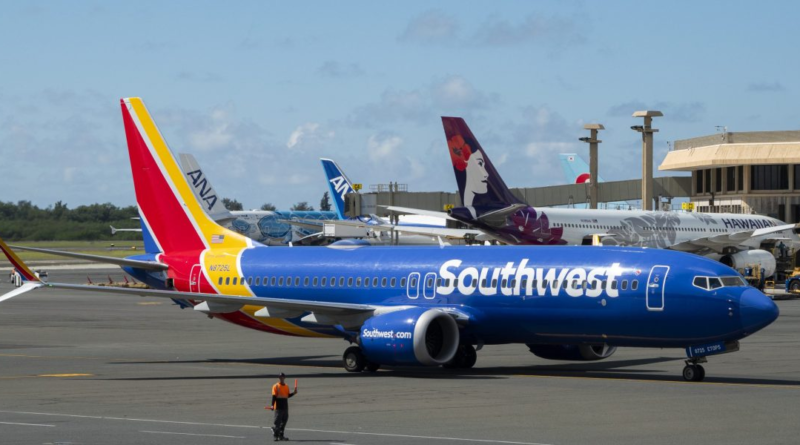The FAA is investigating a Southwest flight that came within 400 feet of slamming into the ocean
A Southwest Airlines Co. passenger flight in April came within 400 feet of slamming into the ocean off the coast of Hawaii after weather conditions forced pilots to bypass a landing attempt.
The Boeing Co. 737 Max 8 jet briefly dropped at an abnormally high rate of more than 4,000 feet per minute before the flight crew pulled up to avoid disaster, according to a memo that Southwest distributed to pilots last week, which was seen by Bloomberg News. No one was injured on the flight, which safely returned to its departure airport in Honolulu.
After inquiries from Bloomberg, the US Federal Aviation Administration said it was investigating the incident.
The previously unreported mishap adds to a spate of safety incidents that have caught the public’s attention as airlines have ramped up flying since the pandemic. It also comes as Southwest management faces growing pressure from activist firm Elliott Investment Management and other investors over frustrations with the company’s lagging financial performance and insular corporate culture.
“Nothing is more important to Southwest than safety,” the airline said in an emailed statement about the Hawaii flight. “Through our robust Safety Management System, the event was addressed appropriately as we always strive for continuous improvement.”
Southwest Flight 2786 dropped from an altitude of roughly 1,000 feet to 400 feet above the ocean in just a few seconds, according to data from ADS-B Exchange, a flight tracking website. The plane, which was near Lihue Airport on the island of Kauai, then began a rapid climb.
The pilot was “pitching up and pitching down with the power and close to out of control — very close,” Kit Darby, a former commercial airline pilot and flight instructor, said in an interview after reviewing details of the flight. “It would feel like a roller coaster ride.”
According to Southwest’s review, the incident occurred following an aborted landing attempt due to inclement weather that blocked the pilots from seeing the runway by a specified altitude.
The captain opted to put the “newer” first officer in command on the short flight to Lihue despite the forecasts, according to the memo.
The less-experienced first officer “inadvertently” pushed forward on the control column while following movement of the thrust lever caused by the plane’s automatic throttle. The pilot then cut the speed, causing the airplane to descend. Soon after, a warning system sounded alarms signaling the jet was getting too close to the surface and the captain ordered the first officer to increase thrust. The plane then “climbed aggressively” at 8,500 feet per minute, the memo said.
Flights preparing for a landing normally glide down at a rate of 1,500 to 2,000 feet a minute early in the approach, Darby said, and slow to 800 feet about five miles out from the airport.
The National Transportation Safety Board isn’t aware of the Southwest incident, a spokesperson said. The Southwest Airlines Pilots Association declined to comment.
Southwest declined to provide the flight number or specify the date of the incident, citing an FAA-overseen safety program under which pilots and other employees can report concerns anonymously.
The carrier concluded in its review of the recent mishap that proper pilot monitoring and better communication between crew members is critical. Among other steps, it pledged to review industry and internal data related to its procedures and training protocols.
The Southwest incident is reminiscent of an event that occurred in December 2022 when a United Airlines Holdings Inc. flight came within about 750 feet of the ocean after suddenly dropping shortly after takeoff from a different Hawaii airport. That incident was investigated by both the FAA and NTSB, which found the mishap resulted from a miscommunication between the pilots on the aircraft.
The pilots involved in that flight received additional training as a result of the incident.
Southwest was little changed at the close of regular trading in New York on Friday.




